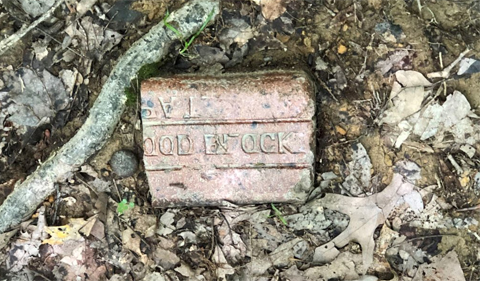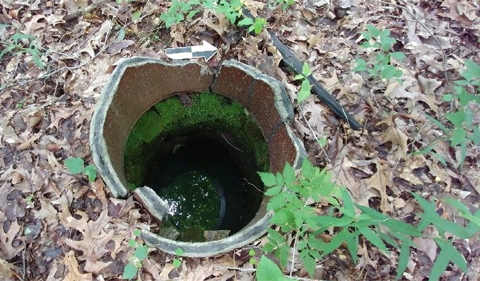By Brenna Tippie and Ben Johnson
Anthropology majors interning at the Wayne National Forest
When anyone hears the word “archaeology,” their mind is drawn to the image of Indiana Jones, his adventures, and all the glory that comes with them.
What they don’t tell you about is the hills.
From the first day of fieldwork, all we knew was hills and slopes, endlessly trudging up or down them, all while keeping mosquitoes and multiflora rose at bay. We would occasionally see something like a piece of sandstone or a hole that seemed slightly too large that would catch our eye, but these would just be marked and we would move on.
However, the true worth of all the hiking was found in the form of a brick.
While to most this may seem like a very normal thing, when you are walking through the forest and stumble across a few bricks that are not near a path or trail, it becomes so much more.
Through those bricks we sometimes found pits, walls, cellars, and wells. We found house sites that could tell us more about historic Appalachia. We have walked through and surveyed coal mines, now covered in greenbrier and multiflora rose. There is extensive evidence of the logging that has happened in the Wayne’s past, and just by walking the trails one may not notice those signs. Spending days hiking, backtracking, mapping, and remapping lets you know so much about the area around you that even the slightest change makes us wonder what could have been there.
Over the course of our study of the area, the Long Ridge area has produced two house sites, both of which were identified through surface artifacts, such as glass or ceramic pieces that were in the trail. Long Ridge also gave us more pits than we know what to do with, a series of timber roadways, and a newfound appreciation for man-made trails.
We discovered that quite a bit of the artifacts and sites we documented were near the current paths made for oil and gas access, which could be following older roads that have been widened or cleared further.
We know that what we see, while limited to what is on the ground, is not necessarily all that is there. The joy in what we do comes from knowing that there’s more to find, more to learn, and more to understand. That may mean years of work, or just days, but the one constant is going to be the hills.





















Comments